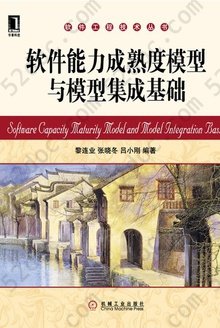注重体验与质量的电子书资源下载网站
分类于: 人工智能 互联网
简介

现代宇宙学 豆 8.8分
资源最后更新于 2020-11-26 07:30:36
作者:Scott Dodelson
出版社:
出版日期:2008-01
ISBN:9787506291996
文件格式: pdf
标签: 物理 宇宙学 宇宙 天文学 天文 科学 宇宙学7 英文
简介· · · · · ·
《现代宇宙学》系统地介绍了现代宇宙学的最新进展。从平坦均匀的宇宙(可以用弗里德曼—罗伯逊—沃克度规描述)开始,讲解了暗能量的处理过程,宇宙大爆炸的核合成,重组和暗物质,然后介绍了对平坦均匀宇宙的扰动:宇宙的演化和爱因斯坦—玻尔兹曼方程组,原始膨胀和现代宇宙的形成,以及观测结果如宇宙微波背景的各向异性,红移扭曲和弱透镜化现象等。《现代宇宙学》对宇宙微波背景的声学峰结构,以及用来探测原始引力波的偏振的E/B分解都有较详细的讨论,还包含了一个长的章节专门介绍对日益庞大的宇宙观测数据进行现代分析的技术。每章后都附有该章总结和相关文献。通过学习,读者可以获得从事现代宇宙学研究必须的知识和方法。
目录
1 The Standard Model and Beyond
1.1 The Expanding Universe
1.2 The Hubble Diagram
1.3 Big Bang Nucleosynthesis
1.4 The Cosmic Microwave Background
1.5 Beyond the Standard Model
1.6 Summary
Exercises
2 The Smooth, Expanding Universe
2.1 General Relativity
2.1.1 The Metric
2.1.2 The Geodesic Equation
2.1.3 Einstein Equations
2.2 Distances
2.3 Evolution of Energy
2.4 Cosmic Inventory
2.4.1 Photons
2.4.2 Baryons
2.4.3 Matter
2.4.4 Neutrinos
2.4.5 Dark Energy
2.4.6 Epoch of Matter-Radiation Equality
2.5 Summary
Exercises
Beyond Equilibrium
3.1 Boltzmann Equation for Annihilation
3.2 Big Bang Nucleosynthesis
3.2.1 Neutron Abundance
3.2.2 Light Element Abundances
3.3 Recombination
3.4 Dark Matter
3.5 Summary
Exercises
4 The Boltzmann Equations
4.1 The Boltzmann Equation for the Harmonic Oscillator
4.2 The Collisionless Boltzmann Equation for Photons
4.2.1 Zero-Order Equation
4.2.2 First-Order Equation
4.3 Collision Terms: Compton Scattering
4.4 The Boltzmann Equation for Photons
4.5 The Boltzmann Equation for Cold Dark Matter
4.6 The Boltzmann Equation for Baryons
4.7 Summary
Exercises
5 Einstein Equations
5.1 The Perturbed Ricci Tensor and Scalar
5.1.1 Christoffel Symbols
5.1.2 Ricci Tensor
5.2 Two Components of the Einstein Equations
5.3 Tensor Perturbations
5.3.2 Ricci Tensor for Tensor Perturbations
5.3.3 Einstein Equations for Tensor Perturbations
5.4 The Decomposition Theorem
5.5 From Gauge to Gauge
5.6 Summary
Exercises
6 Initial Conditions
6.1 The Einstein-Boltzmann Equations at Early Times
6.2 The Horizon'
6.3 Inflation
6.3.1 A Solution to the Horizon Problem
6.3.2 Negative Pressure
6.3.3 Implementation with a Scalar Field
6.4 Gravity Wave Production
6.4.1 Quantizing the Harmonic Oscillator
6.4.2 Tensor Perturbations
6.5 Scalar Perturbations
6.5.1 Scalar Field Perturbations around a Smooth Background
6.5.2 Super-Horizon Perturbations
6.5.3 Spatially Flat Slicing
6.6 Summary and Spectral Indices
Exercises
7 Inhomogeneities
7.1 Prelude
7.1.1 Three Stages of Evolution
7.1.2 Method
7.2 Large Scales
7.2.1 Super-horizon Solution
7.2.2 Through Horizon Crossing
7.3 Small Scales
7.3.1 Horizon Crossing
7.3.2 Sub-horizon Evolution
7.4 Numerical Results and Fits
7.5 Growth Function
7.6 Beyond Cold Dark Matter
7.6.1 Baryons
7.6.2 Massive Neutrinos
7.6.3 Dark Energy
Exercises
8 Anisotropies
8.1 Overview
8.2 Large-Scale Anisotropies
8.3 Acoustic Oscillations
8.3.1 Tightly Coupled Limit of the Boltzmann Equations
8.3.2 Tightly Coupled Solutions
8.4 Diffusion Damping
8.5 Inhomogeneities to Anisotropies
8.5.1 Free Streaming
8.5.2 The Cl's
8.6 The Anisotropy Spectrum Today
8.6.1 Sachs-Wolfe Effect
8.6.2 Small Scales
8.7 Cosmological Parameters
8.7.1 Curvature
8.7.2 Degenerate Parameters
8.7.3 Distinct Imprints
Exercises
9 Probes of Inhomogeneities
9.1 Angular Correlations
9.2 Peculiar Velocities
9.3 Direct Measurements of Peculiar Velocities
9.4 Redshift Space Distortions
9.5 Galaxy Clusters
Exercises
10 Weak Lensing and Polarization
10.1 Gravitational Distortion of Images
10.2 Geodesics and Shear
10.3 Ellipticity as an Estimator of Shear
10.4 Weak Lensing Power Spectrum
10.5 Polarization: The Quadrupole and the Q/U Decomposition
10.6 Polarization from a Single Plane Wave
10.7 Boltzmann Solution
10.8 Polarization Power Spectra
10.9 Detecting Gravity Waves
Exercises
11 Analysis
11.1 The Likelihood Function
11.1.1 Simple Example
11.1.2 CMB Likelihood
11.1.3 Galaxy Surveys
11.2 Signal Covariance Matrix
11.2.1 CMB Window Functions
11.2.2 Examples of CMB Window Functions
11.2.3 Window Functions for Galaxy Surveys
11.2.4 Summary
11.3 Estimating the Likelihood Function
11.3.1 Karhunen-Loeve Techniques
11.3.2 Optimal Quadratic Estimator
11.4 The Fisher Matrix: Limits and Applications
11.4.1 CMB
11.4.2 Galaxy Surveys
11.4.3 Forecasting
11.5 Mapmaking and Inversion
11.6 Systematics
11.6.1 Foregrounds
11.6.2 Mode Subtraction
Exercises
A Solutions to Selected Problems
B Numbers
B.1 Physical Constants
B.2 Cosmological Constants
C Special Functions
C.1 Legendre Polynomials
C.2 Spherical Harmonics
C.3 Spherical Bessel Functions
C.4 Fourier Transforms
C.5 Miscellaneous
D Symbols Bibliography
Index
1.1 The Expanding Universe
1.2 The Hubble Diagram
1.3 Big Bang Nucleosynthesis
1.4 The Cosmic Microwave Background
1.5 Beyond the Standard Model
1.6 Summary
Exercises
2 The Smooth, Expanding Universe
2.1 General Relativity
2.1.1 The Metric
2.1.2 The Geodesic Equation
2.1.3 Einstein Equations
2.2 Distances
2.3 Evolution of Energy
2.4 Cosmic Inventory
2.4.1 Photons
2.4.2 Baryons
2.4.3 Matter
2.4.4 Neutrinos
2.4.5 Dark Energy
2.4.6 Epoch of Matter-Radiation Equality
2.5 Summary
Exercises
Beyond Equilibrium
3.1 Boltzmann Equation for Annihilation
3.2 Big Bang Nucleosynthesis
3.2.1 Neutron Abundance
3.2.2 Light Element Abundances
3.3 Recombination
3.4 Dark Matter
3.5 Summary
Exercises
4 The Boltzmann Equations
4.1 The Boltzmann Equation for the Harmonic Oscillator
4.2 The Collisionless Boltzmann Equation for Photons
4.2.1 Zero-Order Equation
4.2.2 First-Order Equation
4.3 Collision Terms: Compton Scattering
4.4 The Boltzmann Equation for Photons
4.5 The Boltzmann Equation for Cold Dark Matter
4.6 The Boltzmann Equation for Baryons
4.7 Summary
Exercises
5 Einstein Equations
5.1 The Perturbed Ricci Tensor and Scalar
5.1.1 Christoffel Symbols
5.1.2 Ricci Tensor
5.2 Two Components of the Einstein Equations
5.3 Tensor Perturbations
5.3.2 Ricci Tensor for Tensor Perturbations
5.3.3 Einstein Equations for Tensor Perturbations
5.4 The Decomposition Theorem
5.5 From Gauge to Gauge
5.6 Summary
Exercises
6 Initial Conditions
6.1 The Einstein-Boltzmann Equations at Early Times
6.2 The Horizon'
6.3 Inflation
6.3.1 A Solution to the Horizon Problem
6.3.2 Negative Pressure
6.3.3 Implementation with a Scalar Field
6.4 Gravity Wave Production
6.4.1 Quantizing the Harmonic Oscillator
6.4.2 Tensor Perturbations
6.5 Scalar Perturbations
6.5.1 Scalar Field Perturbations around a Smooth Background
6.5.2 Super-Horizon Perturbations
6.5.3 Spatially Flat Slicing
6.6 Summary and Spectral Indices
Exercises
7 Inhomogeneities
7.1 Prelude
7.1.1 Three Stages of Evolution
7.1.2 Method
7.2 Large Scales
7.2.1 Super-horizon Solution
7.2.2 Through Horizon Crossing
7.3 Small Scales
7.3.1 Horizon Crossing
7.3.2 Sub-horizon Evolution
7.4 Numerical Results and Fits
7.5 Growth Function
7.6 Beyond Cold Dark Matter
7.6.1 Baryons
7.6.2 Massive Neutrinos
7.6.3 Dark Energy
Exercises
8 Anisotropies
8.1 Overview
8.2 Large-Scale Anisotropies
8.3 Acoustic Oscillations
8.3.1 Tightly Coupled Limit of the Boltzmann Equations
8.3.2 Tightly Coupled Solutions
8.4 Diffusion Damping
8.5 Inhomogeneities to Anisotropies
8.5.1 Free Streaming
8.5.2 The Cl's
8.6 The Anisotropy Spectrum Today
8.6.1 Sachs-Wolfe Effect
8.6.2 Small Scales
8.7 Cosmological Parameters
8.7.1 Curvature
8.7.2 Degenerate Parameters
8.7.3 Distinct Imprints
Exercises
9 Probes of Inhomogeneities
9.1 Angular Correlations
9.2 Peculiar Velocities
9.3 Direct Measurements of Peculiar Velocities
9.4 Redshift Space Distortions
9.5 Galaxy Clusters
Exercises
10 Weak Lensing and Polarization
10.1 Gravitational Distortion of Images
10.2 Geodesics and Shear
10.3 Ellipticity as an Estimator of Shear
10.4 Weak Lensing Power Spectrum
10.5 Polarization: The Quadrupole and the Q/U Decomposition
10.6 Polarization from a Single Plane Wave
10.7 Boltzmann Solution
10.8 Polarization Power Spectra
10.9 Detecting Gravity Waves
Exercises
11 Analysis
11.1 The Likelihood Function
11.1.1 Simple Example
11.1.2 CMB Likelihood
11.1.3 Galaxy Surveys
11.2 Signal Covariance Matrix
11.2.1 CMB Window Functions
11.2.2 Examples of CMB Window Functions
11.2.3 Window Functions for Galaxy Surveys
11.2.4 Summary
11.3 Estimating the Likelihood Function
11.3.1 Karhunen-Loeve Techniques
11.3.2 Optimal Quadratic Estimator
11.4 The Fisher Matrix: Limits and Applications
11.4.1 CMB
11.4.2 Galaxy Surveys
11.4.3 Forecasting
11.5 Mapmaking and Inversion
11.6 Systematics
11.6.1 Foregrounds
11.6.2 Mode Subtraction
Exercises
A Solutions to Selected Problems
B Numbers
B.1 Physical Constants
B.2 Cosmological Constants
C Special Functions
C.1 Legendre Polynomials
C.2 Spherical Harmonics
C.3 Spherical Bessel Functions
C.4 Fourier Transforms
C.5 Miscellaneous
D Symbols Bibliography
Index








